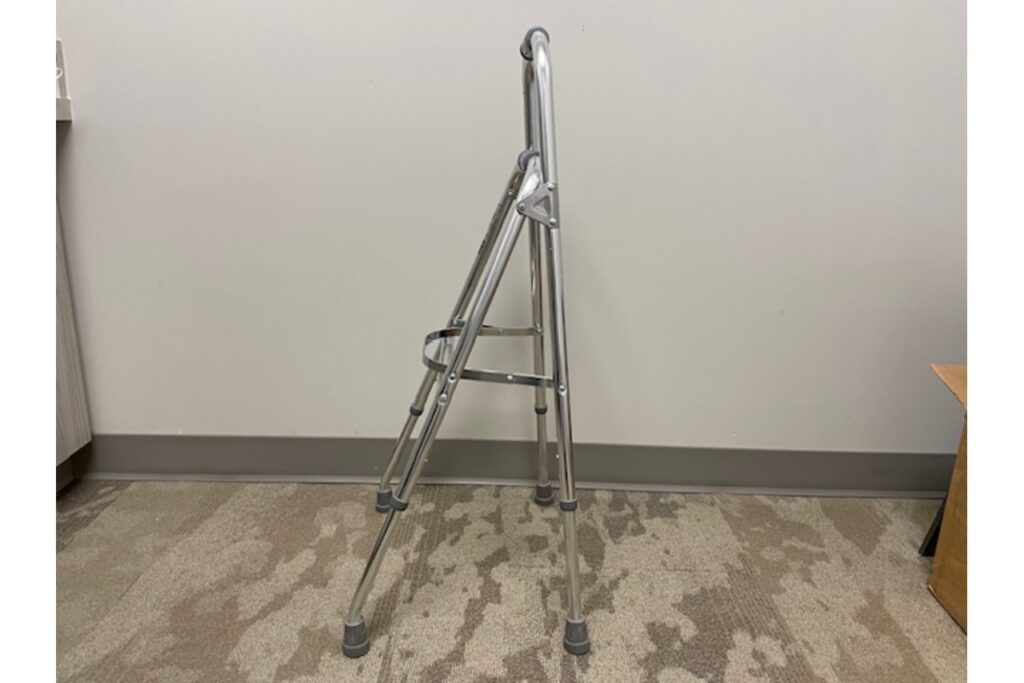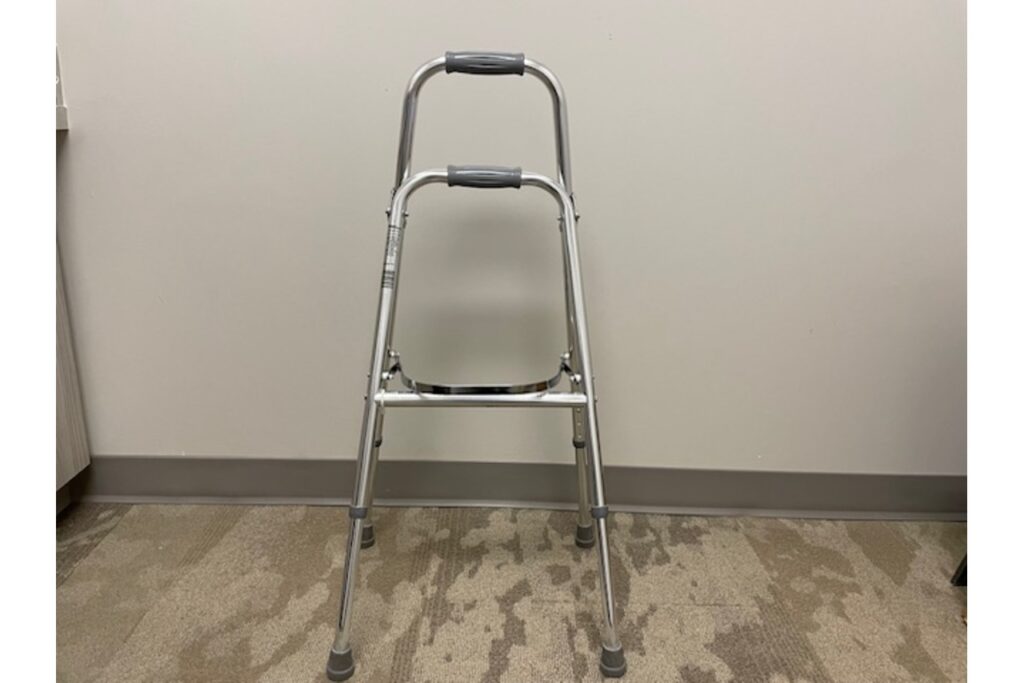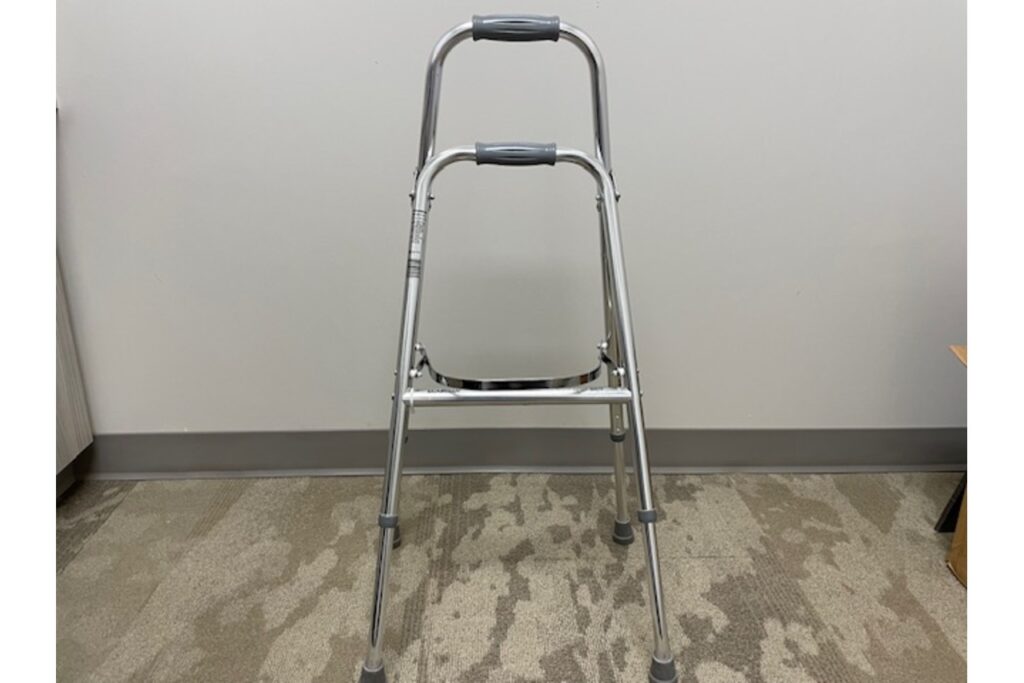Bridging the Gap to Independence for Seniors and Therapists
Have you or someone you care about struggled with mobility issues? You’re not alone. For seniors and individuals undergoing rehabilitation, maintaining independence is crucial. Enter the hemi walker, a mobility aid designed to enhance stability and support. In this post, we’ll explore how the hemi walker can significantly improve the quality of life for its users, with insights tailored to seniors, physical therapists, and occupational therapists. Expect to learn about its unique design, benefits, and usage tips that will help you make an informed decision.
Understanding the Hemi Walker

Exploring Its Unique Design and Functionality
The hemi walker stands out with its distinctive design, combining elements of both a cane and a traditional walker. Unlike standard walkers that require both hands, a hemi walker provides support on one side, making it ideal for those with limited strength or coordination. Its lightweight and compact structure make it easy to maneuver, offering users the flexibility to move around with confidence.
The hemi walker features a sturdy frame and a wide base for enhanced stability. Its adjustable height accommodates various user preferences, ensuring comfort and optimum support. Unlike canes, which primarily aid balance, this walker offers substantial weight-bearing support, making it a more reliable choice for those needing additional assistance.
Differentiating from Standard Walkers and Canes
While standard walkers provide bilateral support, they can be cumbersome for those with limited mobility on one side. The hemi walker, on the other hand, is designed for unilateral use, perfect for individuals recovering from strokes or surgeries affecting one side of the body. It bridges the gap between canes, which may not offer enough support, and bulkier walkers, which can be challenging to manage.
Compared to canes, the hemi walker offers more stability due to its broader base and ability to bear more weight. This makes it an excellent option for those who require more than a cane but are not comfortable with a full-sized walker. Its design allows for easy transitions between sitting and standing, a crucial feature for maintaining independence in daily activities.
Benefits for Seniors

Enhanced Stability and Support
For seniors, the hemi walker design provides enhanced stability, reducing the risk of falls. The wide base and robust structure give users the confidence to move around without fear, promoting both physical safety and emotional well-being.
The hemi walker’s lightweight nature makes it easier for seniors to use without exerting too much energy. Its ergonomic handles are designed for comfort, reducing strain on the hands and wrists. This thoughtful design ensures that seniors can maintain mobility without compromising on comfort, encouraging them to stay active and engaged.
Improving Independence in Daily Activities
One of the significant benefits of a hemi walker is its ability to foster independence. Seniors using this mobility aid can perform daily tasks such as shopping, walking in the park, or even attending social gatherings with ease. By providing the necessary support, the walker empowers users to participate in activities they love without relying heavily on others.
The hemi walker also supports rehabilitation processes, aiding in the recovery of strength and balance. By using it regularly, seniors can gradually regain their independence, improving not only their physical capabilities but also their confidence and quality of life.
Benefits for Physical Therapists
Facilitating Proper Gait Patterns and Weight-Bearing
Physical therapists find the hemi walker invaluable in facilitating proper gait patterns. Its design encourages users to adopt the correct walking posture, crucial for long-term mobility health. By ensuring even weight distribution, the hemi walker helps prevent further injury, making it a preferred choice in rehabilitation settings.
Therapists appreciate how the hemi walker supports gradual weight-bearing exercises. Its use in therapy sessions can lead to faster recovery times as it allows patients to practice walking with the right amount of support. This adaptability makes it a versatile tool in individualized rehabilitation plans.
Integrating into Rehabilitation Programs
The hemi walker seamlessly integrates into various rehabilitation programs, providing physical therapists with a reliable tool to aid their patients’ progress. Its ability to adapt to different levels of support makes it suitable for patients at various stages of recovery. Whether starting with minimal movement or advancing to more dynamic exercises, the walker offers consistent support.
Therapists often prefer the hemi walker over other aids due to its versatility and effectiveness in catering to specific needs. It allows for creative rehabilitation strategies, helping patients achieve their goals more efficiently. By incorporating the hemi walker into therapy plans, therapists can enhance the overall success of rehabilitation programs.
Benefits for Occupational Therapists
Encouraging Functional Independence
Occupational therapists play a vital role in helping individuals regain their day-to-day functional skills. The hemi walker is an excellent tool for encouraging functional independence in patients. Its design supports activities of daily living (ADLs), such as dressing, cooking, and cleaning, by providing the necessary support while still allowing for the use of one hand.
The hemi walker aids in improving coordination and strength, vital components in occupational therapy. Its use helps patients practice movements that are essential for daily tasks, bridging the gap between therapy sessions and real-world application.
Aiding in Patient Motivation and Confidence
Occupational therapists understand the importance of motivation in the recovery process. The hemi walker can significantly boost patients’ confidence by enabling them to perform activities independently. This sense of achievement fosters motivation, encouraging patients to continue their therapy with enthusiasm.
By integrating the hemi walker into therapy sessions, occupational therapists can offer patients tangible progress markers. Each successful task completed with the walker serves as a stepping stone towards greater independence, reinforcing the patient’s belief in their capabilities.
Using the Hemi Walker Correctly

Tips for Adjustment and Use
Correct usage of a hemiwalker is essential for maximizing its benefits. When adjusting the walker, ensure that the handles are at wrist height when the user’s arms are relaxed at their sides. This positioning promotes comfort and reduces strain during use.
Encourage users to step forward with the leg opposite to the walker first, maintaining a smooth and natural gait. Consistent practice will help develop muscle memory, making the use of the walker more intuitive over time.
Common Mistakes to Avoid
While the hemi walker is designed for ease of use, there are common mistakes to avoid. Ensure that users do not lean excessively on the walker, as this can lead to an imbalanced gait. Instead, encourage them to use the walker for support while maintaining an upright posture.
Another common mistake is improper adjustment. Always check that the walker is adjusted to the correct height for each user. An incorrect height can lead to discomfort or inefficiency in movement.
Conclusion and Recommendations
In summary, the hemi walker is a valuable tool for older adults, physical therapists, and occupational therapists alike. Its unique design offers a perfect blend of support and independence, enhancing the quality of life for users. Whether for everyday mobility or rehabilitation, the walker stands out as an indispensable aid.
The information provided on this website is for general informational purposes only. It is not intended as, nor should it be considered, professional or medical advice. Always consult a professional regarding your specific medical issue.
Frequently Asked Questions
What is the primary purpose of a hemi walker?
The primary purpose of a hemi walker is to assist individuals who have weakness on one side of their body, typically due to conditions such as stroke or injury. It offers support and stability, facilitating easier and safer mobility for users who require additional balance assistance.
Who can benefit from using a hemi walker?
Hemi walkers are particularly beneficial for older adults, stroke survivors, or individuals undergoing rehabilitation who need extra support while walking. It is ideal for those who can use only one arm or have limited strength on one side of their body.
Is a hemi walker suitable for outdoor use?
Yes, a hemi walker is suitable for outdoor use, provided the terrain is relatively even. The walker is designed for stability on flat surfaces, making it effective for use in outdoor environments, such as parks and sidewalks, as long as the conditions are safe.
How should a hemi walker be properly maintained?
To properly maintain a hemi walker, regularly check for signs of wear and tear, especially on the rubber tips. Ensure all joints and moving parts are functioning smoothly. Clean the walker with a mild detergent and damp cloth, and routinely check for any loose screws or components.
Can a hemi walker be adjusted to fit different users?
Yes, a hemi walker can typically be adjusted to accommodate different users. The height of the walker can usually be modified to ensure the handles are at the correct level, which is at wrist height when the user’s arms are relaxed at their sides. This allows for personalized comfort and efficiency.
References
American Stroke Association. (2022). Rehabilitation After Stroke: A Resource Guide for Patients and Families.
Smith, J. & Doe, L. (2021). The Role of Assistive Devices in Enhancing Patient Mobility. Journal of Rehabilitation Research, 45(2), 102-115.
Johnson, R. & Ellis, K. (2023). Occupational Therapy and Assistive Devices: Improving Patient Outcomes. International Journal of Occupational Therapy, 12(3), 399-409.
Recently Featured OT Insider Posts
PCN Medical Abbreviation: Everything You Need to Know
ETOH Medical Abbreviation: Everything Your Need to Know
HS Medical Abbreviation: Understanding Hidradenitis Suppurativa
